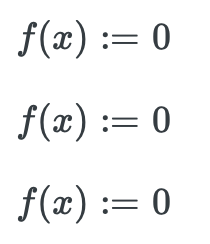Leaderboard
Popular Content
Showing content with the highest reputation on 10/14/23 in all areas
-
So you can perform the following simple calculation, without using energy. Please show me how. I have a 1kg bar of lead that I wish to melt. I have a bunsen burner and a suitable steel pot to melt the bar in. How much gas to I need to fully melt the bar ? Please ignore losses for this calculation.1 point
-
Energy is a physical thing, that is, you can certainly feel the difference between hot coffee/tea and cold coffee/tea. The question should be "how much leakage" of this energy, if any, instead of this crap: "Energy is NONSENSE". If it's 0.00000000001 then you should show it. We would have at least had some scientific discussion on your part. But you are not able to. You are not able to, because physics and chemistry are experimental. Theoretical physics is something new in the 20th century. To become a theoretical physicist, you have to learn everything about experimental physics, chemistry, etc. Laymen on the Internet tend to skip the whole learning process and just post their useless drivel on science forums without bothering to acquire everything that real scientists took years of study. Check sandbox: https://www.scienceforums.net/forum/99-the-sandbox/ There, even well-known members practiced..1 point
-
I tried using a language model; Input prompt: "Can you help me make sense of the following post I found on a science forum. I want you to reformat the text so I can analyse it" (followed by OP). An extract from my first attempt: Maybe you should try one of these tools @Capiert to see of the output better communicates your ideas?1 point
-
Basically, I tend to think, you are, unable to, write posts... and, unable to, learn, how to, use, LaTeX.. So.. any communication, is very cumbersome..1 point
-
The formula of "zinc citrate" seems to be as given here: https://pubchem.ncbi.nlm.nih.gov/compound/ZINC-citrate According to this, it is actually trizinc dicitrate, with a molar mass of 574. This version does not appear to be hydrated. If a "dihydrate" has 2 extra molecules of water per formula unit, that would bring the molar mass to 610. So then indeed, for every 100mg of compound you would get 100 x 195/610 ~ 30 mg Zn. Not being a pharmacist I don't know what a "referenced intake" is, I'm afraid. It is certainly the case that pills contain a lot of other stuff besides the active ingredient. The size of the pill won't be a good guide to how much active ingredient in present. But in all cases the amount should be written on the packaging anyway.1 point
-
It is sold in mineral oil: https://www.google.com/search?q=lithium+mineral+oil1 point
-
Here's what you said, and what you said it in response to. You asked what does it have to do with escape velocity and I explained why part of it has something to do with escape velocity. I said "The escape velocity isn't strictly relevant, but it's a proxy for gravitational energy." And you ignored that and focussed on this bit. "If you don't fire retro rockets to slow it down, it hits the sun." Repeating your unproven assertion that you can't put something in orbit near the sun- well, in reality it depends in how near you get- but that's beside the point. But the answer to "so what?" is still that escape velocity- or gravitational potential energy- is important to the idea of putting something in orbit round the sun (As Halc said)- even if the thing melts. You brazenly ignored part of what Halc said and bolded part of it, didn't you?1 point
-
1 point
-
I tend to think, we do NOT need (kinetic_)Energy(_difference)’s (redundant) syntax. Let’( u)s face it. Energy is NONSENSE! E.g. 1 Astronomer’s have been complaining for a long time. Now(adays, or a_daze) you (also) have “dark” (=unknown) Energy to cover up that problem. E.g. 2 The output of a NON_elastic collision is always less than the input. I.e. NO matter how (much) you (want to) “guess” explaining its (NON_elastic) loss (e.g. with deformation (dents), acoustic noise (produced), & heat (warmed)); instead of knowing & measuring. Mathematically that loss is calculate_able (accountable, into a reduced_mass (construct)).) E.g. 3. That (NON_elastic collision, Energy loss) is NOT energy conservation but instead a math ERROR (caused by) incompatibility with (average_)momentum. But my question is, do we (really) need the Energy (math) construct, at all? I mean we already have (average_)momentum & it (=that (average_)momentum) does NOT seem to lie at us like Energy (sometimes) does. With the (kinetic_)Energy (construct) we “loose” information. I.e. It (=KEd=delta_KE) is NOT completely “reversible” math (without using the original( parameter)s again); which hinders a (bidirectional math) reverse_ability. E.g. (For linear_acceleration) the kinetic_Energy(_difference) KEd=m*v(d)*va is composed (=made) of: a (=1, single) scalar (mass m); & “2” (speed) vectors (the speed_difference vd=v(d)=v=vf-vi as final_speed vf minus initial_speed vi; & multiplied by the average_speed va=(vf+vi)/2=d/t as added final_speed vf & initial_speed vi divided by 2) . Th(os)e (2) speeds are vectors because they have “direction”, (also) meaning (each) in simplest form e.g. if in 1D, (the) travel can be either: positive (forward(s)); or (else) negative (backward). Mass (is a scalar, &) can NOT do that (bidirectionality). --- Disclaimer 1: I have NOT seen a “negative” mass -m (for that) coefficient (factor m); even if you rave about anti_matter; simply because it (=anti_matter) is (let us say) opposite_charge of (perhaps) a spin. The rule is, every charged (sub_atomic) particle, has its own oppositely charged (so_called aunty_) particle. (Does that include neutral (uncles)?) But during annihilation, at such a subatomic size, how can you prove your guess_work (=assumptions)? That (tracking) seems (to me) impossible to follow; & only a careless (misleading) idea. --- A vector (e.g. such as a(n average) speed v(a)) multiplied by a scalar (e.g. mass m) remains a vector (e.g. (average_)momentum mom(a)=m*v(a)) . But 2 (negative) vectors (e.g. speeds vd & va) loose their (negative) polarity -1=j^2 when multiplied together to become (& always stay, only) positive (scalar); (no matter) whether they were originally positive or negative. That is a loss of (the +/-) polarity information, which is NOT retrievable (=recoverable, salvageable) without using the (original) polarity (again). E.g. Using a factor *v/((v^2)^0.5), where the (linear_accelerated) speed_difference vd=v & visa versa (is the truncated_symbol syntax) v=vd, because they are identical. (I simply truncated the d.) The (vectorized) kinetic_energy(_difference) (e.g. as a) vector KEd=m*v*va*v/((v^2)^0.5) is the (scalar) KEd=m*v*va multiplied by its speed_difference’s polarity v/((v^2)^0.5). If that speed_difference v=vf-vi was negative then its KEd will also become negative. That is why I say (=question) do we really need (e.g. kinetic_)Energy? if we have to (re)modify so much; (because) it(s Energy_math alone) is inferior (NONSENSE). Why DON’T we (just) kick out the concept of Energy (all together)? & throw it away in(to) the garbage. Why do we perpetuate the error_making problems, (called) Energy? Why do we bother, at all, with (the concept, approximation) Energy? (E.g. I have proposed bending (=modifying) Newton’s motion laws (as detour) to get around the Energy error problems; (but that (detour) is) instead of dealing with the real (guilty) culprit (i.e. Energy).) It (=Energy) is way too complicated for what is needed. Energy (syntax, (an) approximation) was invented ((ruffly ~2*KE) by Leibniz; it’( i)s NOT Newtonian) to help describe linear_acceleration(’s work). But Leibniz originally confused mass m=Wt/g with weight Wt=m*g. It’( i)s the gravitational acceleration g=Wt/m that (had) caused that (confusion) problem for him (=Leibniz).-2 points






